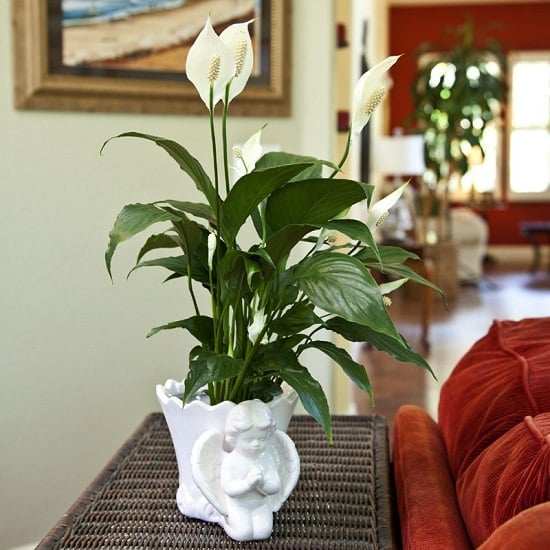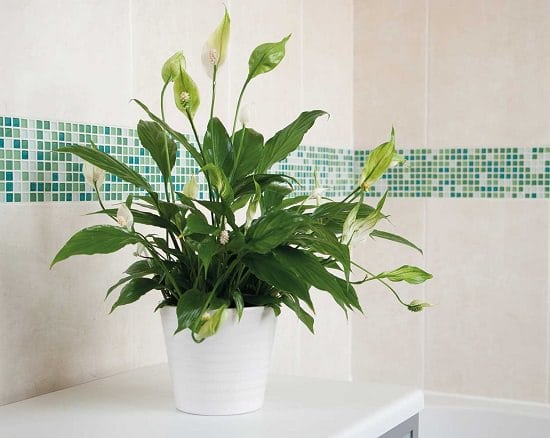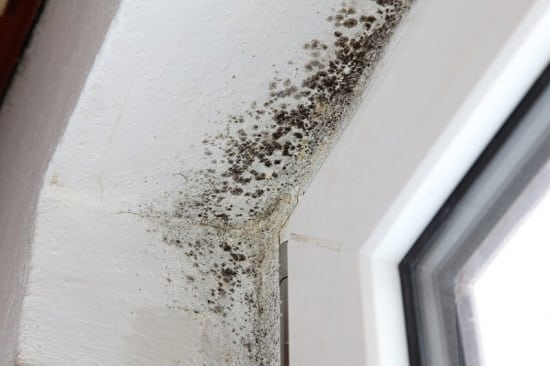Apart from being a showy houseplant, there are amazing Peace Lily Benefits proven in studies you should know!
When it comes to houseplants, the peace lily is one of the most popular plants. Due to its low maintenance and appearance–those big white bracts and glossy green leaves. But do you know apart from just being a showy houseplant, there are many peace lily benefits? Find them out in this article.
Common Names: Spath, White sails, Spathe flower, Cobra plant
Botanical Name: Spathiphyllum Wallisii
1. It Purifies Air
Various air pollutants present in your home can cause severe health-related issues. According to a study, indoor air can be as noxious as outdoor air. However, you can control those harmful gases and VOCs by having proper ventilation and identifying and removing the sources behind this pollution. This guide here will help you.
Growing houseplants indoors is also one more way to reduce them. Peace Lily is one such plant–It can absorb benzene, formaldehyde, toluene, xylene, and carbon monoxide effectively, which was even proved in the famous NASA experiment. It can be as equally effective as Golden Pothos in absorbing VOCs, proven in this Japanese study.
Also Read: Science-Backed Benefits of Golden Pothos
2. It Beautifies Your Room
It’s a no-brainer as peace lilies are among the most popular houseplants because of their enchanting beauty. The white flowers, with its unique shape, is actually not a flower but a curved bract covering the actual small flower. You can plant it in a decorative pot to enhance its beauty.
Also Read: 29 Beautiful Houseplants
3. It’s a Low Maintenance Plant
The peace lily is not only a low-maintenance plant, but it can also grow without sunlight. “Grow without sunlight” means it can grow in bright indirect sunlight. Good looks and low requirements make it an obvious choice among in indoor plant growers.
Also Read: 6 Best Low Maintenance Indoor Plants
4. Prevents Mildew Formation
The dampness in toilets provides a thriving environment for mildew and mold. Usually, on bathroom curtains and tile grouts. As peace lily love to reside in humid conditions keeping it in the bathroom will not only make conditions favorable for it, but it’ll also absorb the excess moisture from the surrounding air. Thus, resulting in the reduction of mildew development in the bathroom.
Also Read: Arum Lily Care and Growing
5. It Absorbs the Acetone Vapors
The harmful vapors from alcohol and acetone are known to have adverse effects on our health. Acetone is commonly found in nail polish remover, varnishes, paints, and rubbing alcohol. Overexposure to it can lead to acetone poisoning, which can cause slurred speech, headache, lack of coordination, lethargy, and low blood pressure. Peace lilies absorb the harmful acetone vapors and keep its presence in the surrounding air in control.
6. Mold Spores Remover
Thriving in the humid and moisture-rich environment mold spores can cause discomfort and many health issues to people sensitive to it. Exposure can cause throat irritation, eye irritation, nasal stuffiness, coughing, skin irritation, or wheezing. People suffering from chronic lung illnesses, Asthma and having a weak immune system are at a higher health risk from mold exposure. Good news is that peace lily can reduce the mold spores from the surrounding air by absorbing them.
7. Best Bedroom Plant
Peace lily (Spathiphyllum) plant filters the indoor air and helps in reducing the Volatile Organic Compounds. It also absorbs the airborne mold spores, which are a common allergen and helps in good sleep, we also added it our list of plants for restful sleep!
Also Read: Houseplant that Removes VOCs
The plant looks beautiful and brings calmness when you look at its glossy green leaves and big white bracts. According to Feng shui, peace lily brings positive energy and peaceful touch to the room.
8. It’s a Safe Houseplant
Peace lily contains no toxic compound that is really harmful. It contains insoluble calcium oxalates, which is also found in many fruits and vegetables. Chewing on its leaves can cause irritation in the throat and a burning sensation on the tongue. You can grow it indoors without worrying about your pets.
Also Read: Succulents Poisonous to Cats








I have peace lily at my home. I knew only half of the benefits you mentioned here. I will get another peace lily now. :)
I want more peace lilies!!!
I got a starter for my peace lily from a neighbor in 1968… she was the start of my love of plants and I cant say how many family members have parts of her and have shared her as well…our family “plant matriarch”
I will get myself a peace lily tomorrow :)
I just bought my third plant. I will buy one more for the bathroom and perfaps one or two for the bedroom
Love my Peace Lilly and plan to buy more…one for my friend with COPD and another for n my granddaughter who has asthma.
Oh wow how beautiful and amazing this plant is. I was given a lily today for my 60th Birthday. Will be buying another two soon for the bedrooms
I shall spread the word about the benefits of this glourious plant
Although veterinarians caution you about having a Peace Lily around cats… there are conflicting tales on whether or not Peace Lilies are deadly to cats… I’m seeing No… but, they cause issues. The real problem plants are the TRUE lilies:
“ The more dangerous, potentially fatal lilies are true lilies of the Lilium or Hemerocallis species. Examples of some of these dangerous lilies include the following:
Easter lilies
Tiger lilies
Day lilies (some species)
Asiatic hybrid lilies
Japanese show lilies
Rubrum lilies
Stargazer lilies
Red lilies
Western lilies
Wood lilies
Of these dangerous lilies, keep in mind that all parts of the plant are highly toxic to cats! Even small ingestions (such as 2-3 petals or leaves) – even the pollen or water from the vase – can result in severe, acute kidney injury.
Clinical signs from the Lilium or Hemerocallis type include:
Vomiting
Anorexia
Drooling
Hiding
Lethargy or malaise
Halitosis (bad breath secondary to kidney failure)
Acute kidney injury
Excessive or decreased thirst and urination
Dehydration
Painful abdomen
If your cat is seen consuming any part of a lily, bring your cat (and the plant) immediately to a veterinarian for medical care. When in doubt, call your veterinarian or the ASPCA Animal Poison Control Center at (888) 426-4435 for life-saving information. The sooner you bring in your cat, the better and more efficiently the lily poisoning can be treated.”